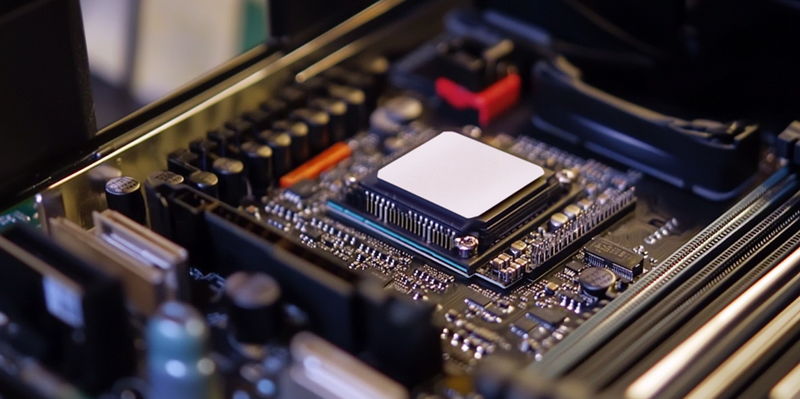In a unique blend of historical curiosity and technological experimentation, programmer Dmitry Grinberg embarked on an unusual challenge: to boot a modern Linux Debian operating system on the Intel 4004 processor. This 4-bit processor, released in 1971, holds the title of the first-ever commercial microchip. The ambitious project not only piqued the interest of tech enthusiasts but also highlighted the vast strides made in computing over the past five decades. The experiment raised questions about the capabilities of early microprocessors compared to modern systems, drawing a fascinating comparison between the technological leaps that have occurred.
The Intel 4004: A Landmark in Microprocessor History
The Intel 4004 chip, launched in 1971, represents a significant milestone in the evolution of computing. Initially designed for calculators, this 4-bit microprocessor laid the groundwork for future developments. As the precursor to the famous Intel 8086 and the widely adopted x86 architecture, the 4004 signaled the dawn of a new era. Despite its limited processing power, the chip’s launch marked a pivotal moment, ushering in the age of microcomputers and complex computational tasks. Indeed, it carved a path for the developments that would shape modern computing as we know it.
The 4004’s specifications are modest by today’s standards. With 2,300 transistors and a clock speed of around 740 kHz, it could handle 92,000 instructions per second. However, for its time, this was revolutionary. Understanding the constraints faced by early microprocessors helps us appreciate the leap in technology that modern CPUs represent, making Grinberg’s experiment even more intriguing. These limitations, while substantial from a contemporary viewpoint, were groundbreaking in the context of the early 1970s. This appreciation adds another layer to the complexity and novelty of Grinberg’s project.
Grinberg’s Ambitious Experiment
Dmitry Grinberg’s motivation to boot Linux on an Intel 4004 stemmed from a desire to explore the intersection of retro computing and contemporary software. Undertaking this experiment posed substantial challenges due to the limitations of the 4004. Booting Linux on such a chip seemed nearly impossible, considering the vast technological advancements that have been achieved since its release. The task required a careful blend of historical hardware understanding and modern software ingenuity, presenting a unique challenge.
Grinberg meticulously assembled a development board tailored to the 4004, integrating a clock generator, RAM, and a ROM controller with an ATMEGA48 acting as ROM. To bridge the gap between the hardware and modern Linux requirements, he incorporated several emulation tricks and extensive optimizations. This methodical approach underscores the complexities involved in marrying decades-old hardware with present-day software. The experiment also highlighted the ingenuity required to make such an outdated processor compatible with contemporary operating systems. The process was a labor of love, reflecting both Grinberg’s technical expertise and his passion for computing history.
Booting Linux: A Slow and Steady Process
The experiment’s outcome was as fascinating as it was slow. It took an astonishing 4.76 days for the Linux Debian operating system to boot on the Intel 4004. This duration starkly contrasts the almost instantaneous boot times of modern systems, highlighting the dramatic evolution in computational speed and efficiency. The long wait served as a practical illustration of the technological advancements made since the 1970s, emphasizing the increased speed and power of contemporary processors.
Even basic operations, such as listing directory contents, required extreme patience. For example, executing the command ‘ls’ took 16 hours to complete. These prolonged durations emphasize the performance limitations of the 4004 when running contemporary software and offer a practical demonstration of technological progress over time. This stark difference provided an engaging way to appreciate the capabilities and limitations of early microprocessors compared to today’s sophisticated technology. The experiment served as a vivid reminder of how far we’ve come in the realm of computing.
Community Interest and Technical Insights
Grinberg’s experiment captivated the tech community, drawing in historians, enthusiasts, and professionals alike. The detailed blog post he published provided an intricate look at the technical hurdles and solutions he employed, shedding light on the capabilities and constraints of early microprocessors. While the average reader might find the specifics dense, tech-savvy individuals appreciated the deep dive into the mechanics of this ambitious project. The in-depth documentation provided a treasure trove of insights for tech enthusiasts and professionals interested in the evolution of computing technology.
Moreover, Grinberg documented his experiment with a video, showcasing the complete boot process at a compression rate of 120x speed. Running over an hour and 40 minutes, this visual evidence offered a tangible glimpse into the feat, making the experiment both an educational resource and an engaging narrative. The video added a layer of accessibility to the project, allowing viewers to witness the painstaking process and drawing a broader audience into the world of retro computing and contemporary software challenges.
The Educational and Entertainment Value
In a fusion of historical intrigue and cutting-edge tech experimentation, programmer Dmitry Grinberg took on a remarkable challenge: getting a modern Linux Debian operating system to run on the Intel 4004 processor. Released in 1971, this 4-bit processor has the distinction of being the world’s first commercial microchip. Grinberg’s ambitious project has captivated tech enthusiasts and underscored the monumental advancements in computing technology over the last fifty years. By attempting to run contemporary software on this antique piece of hardware, Grinberg’s endeavor emphasizes the dramatic progress and growth in the field of microprocessors. His experiment not only captured public curiosity but also brought to light how far technology has come, emphasizing the humble beginnings of computing and sparking discussions about the early limitations and modern capabilities of hardware. The project offers a unique lens through which to view the evolution of processors, shining a spotlight on the extraordinary technological leaps that have shaped today’s digital landscape.

